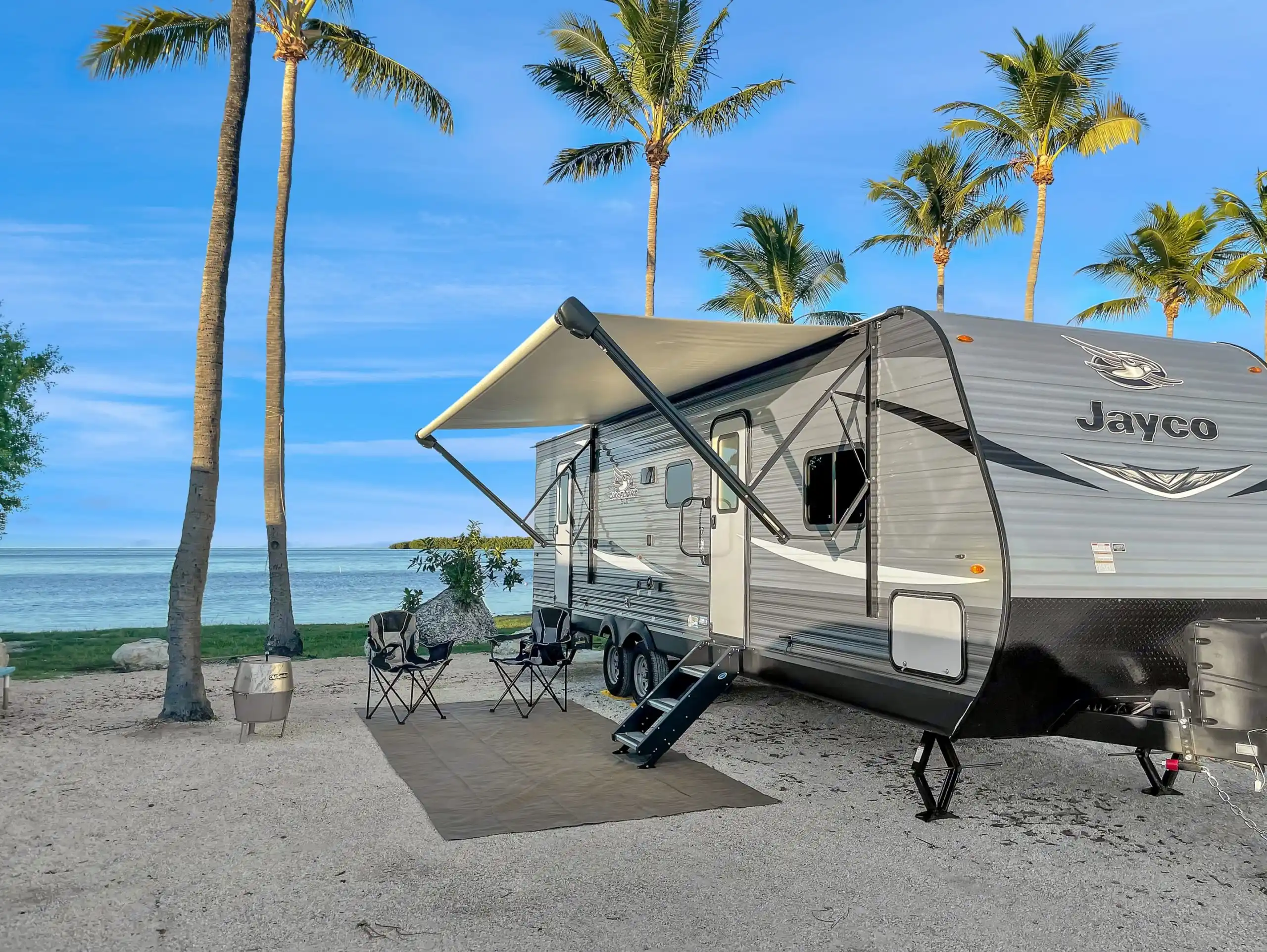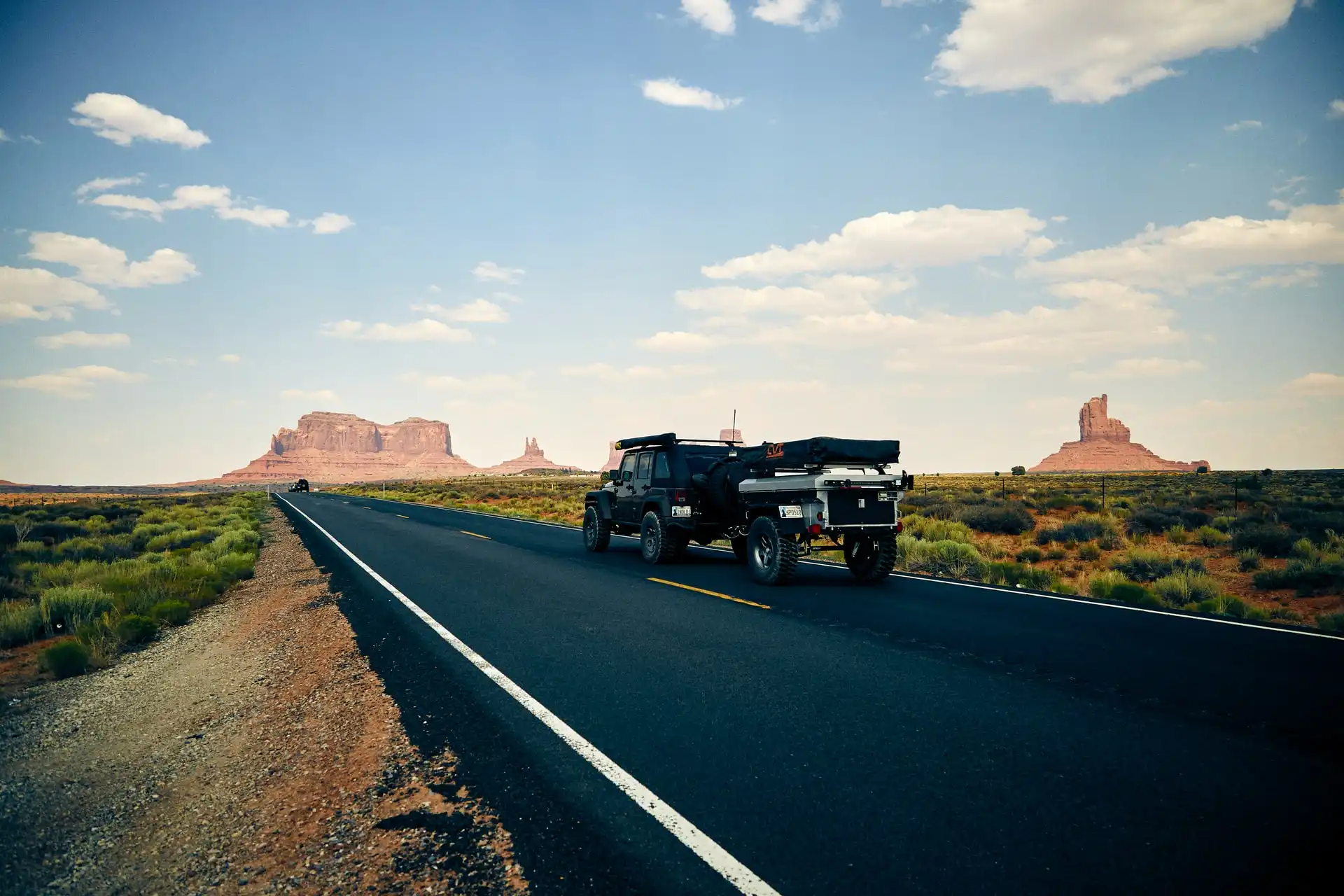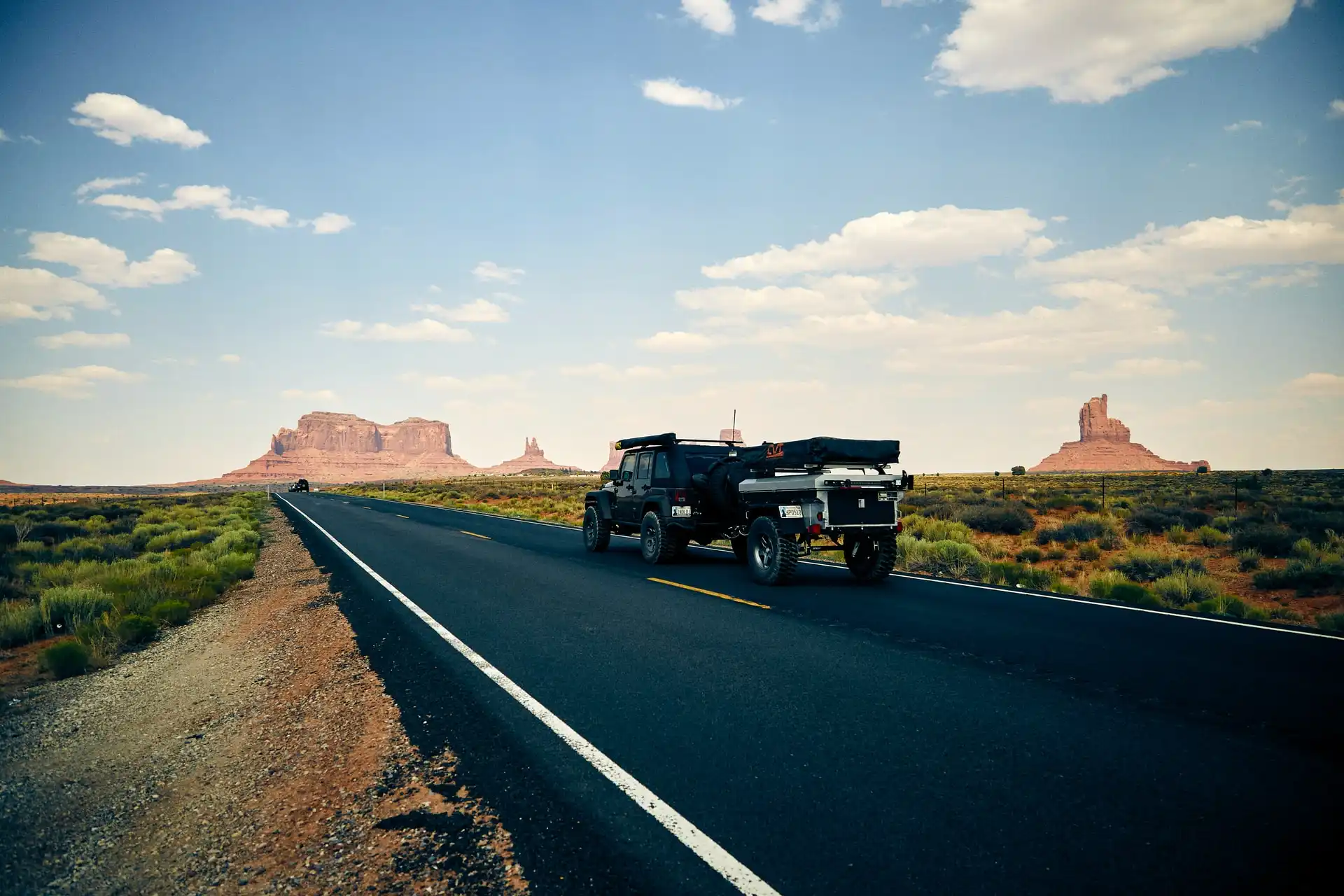Spending time in the great outdoors has long been a pastime for people looking to get away from the hustle and bustle of city and suburban life. When recreational vehicles landed on the market in the 1940s and 1950s, they ushered in a new age of outdoor recreation. However, the campers of the past haven’t always looked like the campers that you’d recognize today. Today, nearly 40 million Americans go RV camping every year. A portion of this 40 million choose fiberglass trailers over any other type. Read on to learn a little more about the history of fiberglass travel trailers, the following they’ve garnered over the years, and what sets them apart from other campers.
The RV Evolution and Fiberglass Travel Trailers
The idea of a mobile camper came about in 1946 after America received an influx of post-war technological advancements.

The earliest campers were 13-inch high squares that could be hitched to the back of a typical family car and toted to a favorite campground. There, the enclosed tent was unpacked right over the wheels and could easily sleep up to four people and hold a total of 1,000 pounds. Within a decade, advancements offered a tent with a full-size bed and kitchenette setup that was easily accessible from the outside of the upgraded square encasement. By 1959, the first fully usable aluminum camper was created which included running water, bunks, and full storage for hunting and fishing gear, as well as luggage for the entire family.
Growing Popularity

The travel tent routine expanded through the ’60s, transforming from cowboy charming to socially selective. Suddenly camping in the great outdoors was fashionable as long as you had your own travel trailer. By the end of the decade, fully enclosed box models offering sleeping bunks for four and extendable picnic options on sturdy flooring gave new meaning to “communing with nature”. But as industry leaders like EZKamper, Apache, and Bethany ran with a “bigger is better” motto with aluminum campers, a Canadian-based company called Boler introduced a fiberglass option that would change the camping game.
Boler initially found it difficult to enter the American market. However, in the early ’70s, Boler America rebranded and became Scamp. They implemented the original 1968 Boler design in the U.S. in 1971, and camping enthusiasts flocked to the new age of cross-country travel.

The Boler Design
Unlike aluminum models, the 13-foot Boler was composed of two molded fiberglass halves sealed together. This made the fiberglass travel trailers super light and mobile. The internal housing contained a sink with a hand pump, refrigerator, stove, sleeping for four, and a rear dinette nestled between seating that could double as a twin bed. It was the epitome of cozy camping at an affordable price. The egg shape marked it as a true Boler/Scamp and provided a visual reminder that camping is truly a family affair. The retro design, which is still present in models produced today, hooks people from all around the world. See how their made in the video from Scamp Trailers below.
Fiberglass Travel Trailers vs. Aluminum Trailers
Aluminum and fiberglass are the two main durable siding materials used in RVs of any size. While both are good materials, it’s important to choose the one that best fits your lifestyle.
Aluminum Trailers
Many people simply want an occasional vehicle to get away with the kids or friends. If you’re not driving in inclement weather or traveling extensively, aluminum may fit the bill. Aluminum is lightweight, easy to repair, and relatively inexpensive. Aluminum is lighter than fiberglass, meaning you can tow it behind vehicles with smaller tow capacities. However, of the two, aluminum is more prone to denting. Something as simple as small hail or a basketball can cause extensive damage to the exterior finish.
Fiberglass Trailers
Fiberglass is strong and durable. Doors and windows seal better with fiberglass, and the material offers better insulation than metal. If you’re traveling in cold weather, you’re likely to stay warmer in a fiberglass travel trailer. On the other hand, if you’re traveling in the summer, you’ll be cooler. Worried about the kids playing too close to the camper? Not a problem with fiberglass travel trailers. They can hit the siding with a baseball bat and it won’t leave a dent. However, fiberglass is more expensive than aluminum— an important consideration in today’s thrifty economy.

Finding Scamp Trailers Today
Scamp’s 2006 warehouse fire limited its late model production, but it’s starting to pick back up. You can still find newer, gently used models on the road if you keep both eyes open. The retro egg-shaped models in multiple finishes and sizes are always recurring fashion-forward trends. Their mission to manufacture and sell the world’s lightest fiberglass travel trailers continues, making right now the perfect time to go chase that next adventure.

Now that you’ve learned about the cult of fiberglass travel trailers, if you’re in the mood to experience trailer camping yourself, take a look at this fiberglass travel trailer beauty based in Atlanta, Georgia. Robin the Tab TQ Teardrop RV rental awaits a fun adventure with you soon!









